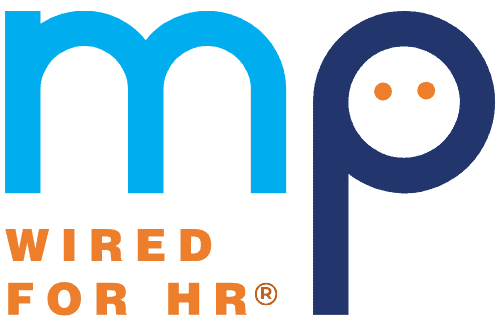Return to the Office 5 Tactics Every Employer Should Take
March 23rd, 2022

Currently, many employers in the United States are deciding to make a return to the office, whether full-time or in a hybrid work arrangement. Before requiring all employees to return to work, using these five tactics will be critical to ensure success. MP’s HR experts share key planning strategies for every employer’s return to the office.
5 Measures for a Successful Return to the Office
1. Give time to prepare and adjust.
Employees who have been able to work from home for the last couple of years will need time to get ready for a new kind of schedule. While they were given remote work options, people may have reduced or cut their childcare, pet care, and other elements of their household operations. They may also not have the right clothes to come back to the office, optimal transportation options, or have set recurring personal appointments (therapy, doctors, etc.) that will need to be rescheduled. To make the transition from a fully remote job back to the office (even in a part-time capacity), employers should give their team time to readjust and make whatever changes are necessary.
2. Make the transition as slow as possible.
Employees will respond better if they aren’t required to come back to the office at full capacity immediately. Employers may want to start with in-person meetings or one day a week, then slowly build to more frequent requirements. Making a slower transition will also help managers and HR members evaluate the process and make necessary changes to improve in-office operations.
3. Create a communication with all relevant information.
If an organization will require their staff to return to the office, they should develop a communication. They could send this communication via email, snail mail, a company intranet, or other ways. It’s imperative that everybody see the communication, so there are no surprises or rumors. The message should include:
- The final return-to-office date. Especially if employees are given time to transition or slowly begin coming in only a few days a week, this will be vital.
- COVID safety measures that the company will be implementing.
- A short outline of how the office will comply with applicable local and federal COVID safety guidelines.
- An explanation of why the return to the office will be necessary for some or all of the team. This section should clearly lay out why operations in the office are imperative for the organization’s success. For example, clients prefer in-person service, the company handles sensitive data that would be safer on computers physically in the office, must keep client or patient files in the office, etc.
- A brief discussion about whether every remote worker will be required to return to the office or not. In some cases, it may make sense for an employer to allow some people to work remotely and require others in-office. This information should be covered in this communication, not via inconsistent statements from managers or rumors among staff.
- The contact information for the HR representative or manager handling the transition. Urge employees to reach out to this contact with questions and concerns.
- Reassuring language. Remind employees they are valued and that the transition will be safe and as comfortable as possible.
- A statement that plans for operating in-office and preventing COVID outbreaks will be evaluated and updated as necessary. Employers should also have plans in place if they need to return to remote work again.
4. Create a culture of respect.
When employees return to the office post-pandemic, they may want to discuss topics such as vaccinations, COVID safety procedures, masking, etc. As with any other hot-button issue, people who work together won’t always agree during these discussions. It’s vital to ensure that everyone is respectful of each other, even if their opinions of pandemic matters differ. Collaboration and team productivity may suffer greatly if managers don’t prioritize this matter.
5. Consider requesting team input.
Employers may consider requesting employee feedback and input on making a return to the office. However, they should only do so if they’ll be able to take some action. If they request feedback and ignore all of it, they’ll likely damage employee morale.
Whether you’re returning to work or staying remote, don’t forget about worker’s compensation claims. Download the brief to learn more.
Recent Posts
- Tools and Strategies for Fostering a Psychologically Safe Workplace
- Legal Responsibilities and the Role of Leadership in Mental Health Support
- Leadership’s Role in Supporting Employee Mental Health
- The Mental Health Crisis in the Workplace and Why Employers Can’t Ignore It
- Michigan’s Sick Leave Law Just Changed—Here’s What Employers Need to Know in 2025
Categories
- ACA (10)
- AI (6)
- BizFeed (6)
- Business Strategy (119)
- COBRA (5)
- Compliance (216)
- COVID-19 (92)
- Diversity (12)
- eBooks (19)
- Employee Engagement (33)
- Employee Handbooks (24)
- ERTC (29)
- FFCRA (7)
- HR (306)
- MP Insider (13)
- Payroll (136)
- PFML (9)
- PPP (24)
- PTO (5)
- Recruiting (53)
- Remote Work (39)
- Return to Work (32)
- Unemployment (1)
- Wellness (22)
Archives
- July 2025
- June 2025
- May 2025
- April 2025
- March 2025
- February 2025
- January 2025
- December 2024
- November 2024
- October 2024
- September 2024
- August 2024
- July 2024
- June 2024
- May 2024
- April 2024
- March 2024
- February 2024
- January 2024
- December 2023
- November 2023
- October 2023
- July 2023
- June 2023
- May 2023
- April 2023
- March 2023
- January 2023
- December 2022
- October 2022
- September 2022
- August 2022
- July 2022
- June 2022
- May 2022
- April 2022
- March 2022
- February 2022
- January 2022
- December 2021
- November 2021
- October 2021
- September 2021
- August 2021
- July 2021
- June 2021
- May 2021
- April 2021
- March 2021
- February 2021
- January 2021
- December 2020
- November 2020
- October 2020
- September 2020
- August 2020
- July 2020
- June 2020
- May 2020
- April 2020
- March 2020



